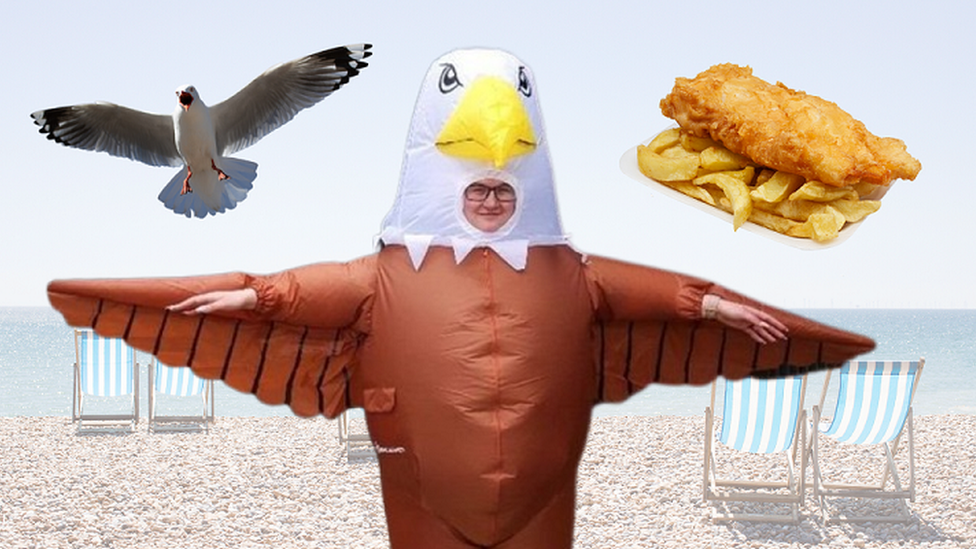Swiping seagulls watch humans when picking what to eat!
- Published
- comments
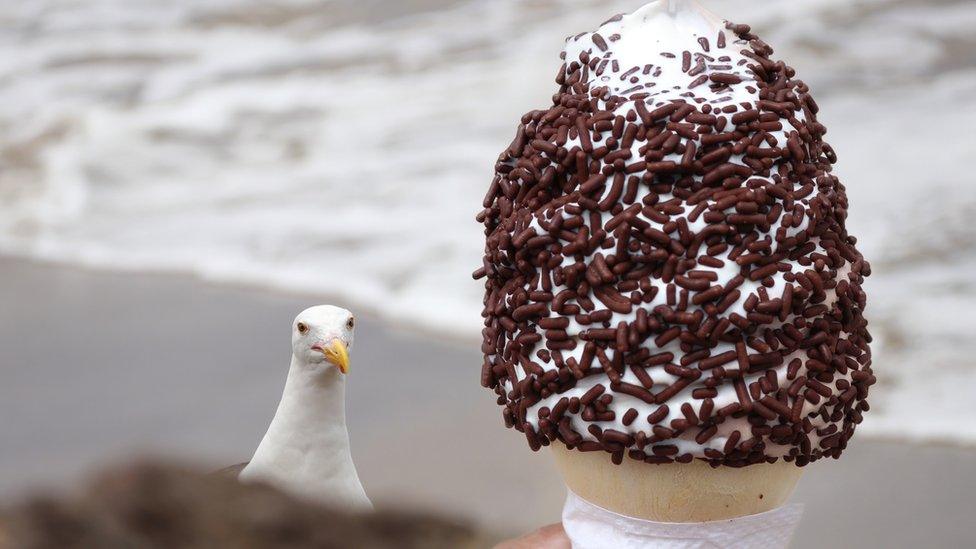
Seagulls are often viewed as a nuisance
Picture this - you're at the beach on a sweltering summer day enjoying the sand, sea and some delicious seaside treats when a hungry seagull disturbs the peace by swiping your ice cream cone or bag of chips!
It's a scene many are are familiar with and lots of people view seagulls as greedy birds eating every and anything in sight.
However, a new study suggests more thought may go into the food choices the birds make than people imagine.
Seagulls decide what foods they'd like to eat by paying close attention to what humans are munching on nearby, according to the findings.
It's already known that gulls tend to go for foods that humans have handled, but the researchers wanted to find out just how well the birds are able to use the information they've gathered from what they see humans eating to seek out similar foods.
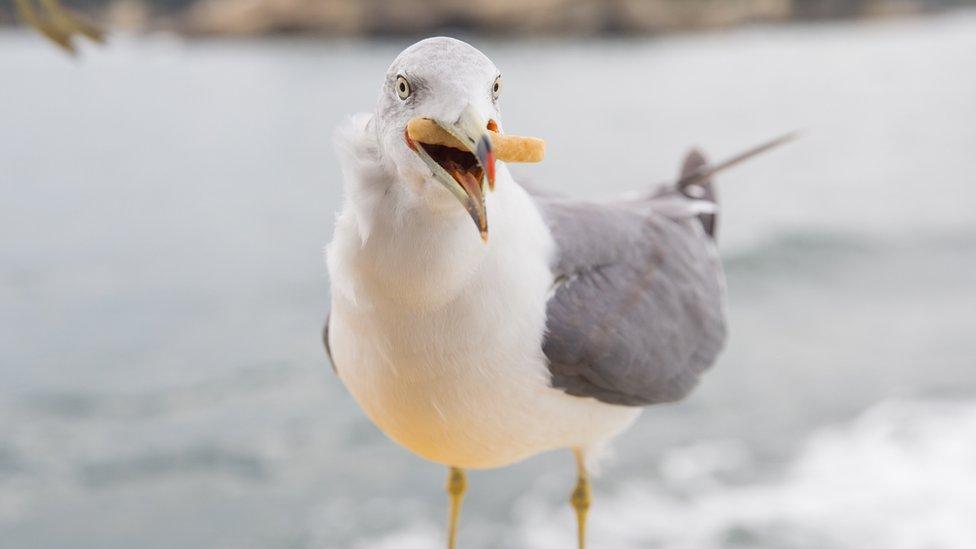
Chip anyone? Seagulls are known for swiping food from people at the beach
The team which carried out the research studied the habits of herring gulls on the beachfront in Brighton from May to June in 2021, and March to May in 2022.
A group of the birds were able to choose between either blue or green packets of crisps which were taped to ceramic tiles laid out on the beach's pebbles between five and 10 metres away from the seagulls.
However, while making their decisions, the gulls either had a scientist sitting about five metres away from the packets and watching them with nothing in their hands, or eating a blue or green packet of crisps.
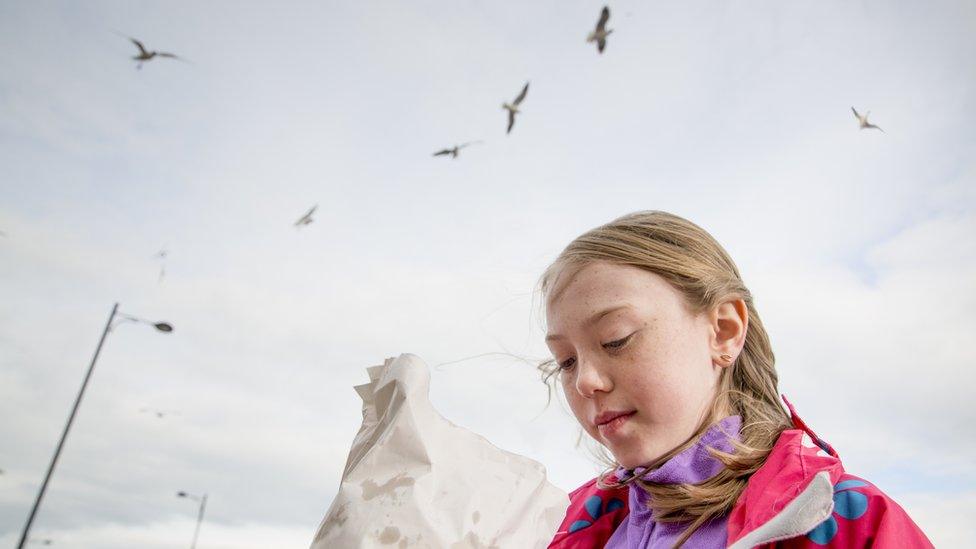
Seagulls are known for feasting on foods eaten by humans, but a new study suggests more goes into their meal choices than first thought
The researchers found that nearly half of the seagulls went over to the packets of crisps when they spotted the scientist eating them, compared with just 19% of them checking out the offerings when no one was munching on the snacks.
When the seagulls did decide to approach the crisp packets, they picked the same colour treat as the person they saw eating them a whopping 95% of the time.
The results suggest the birds are very clever, and are able to use human cues and behaviour to make decisions.
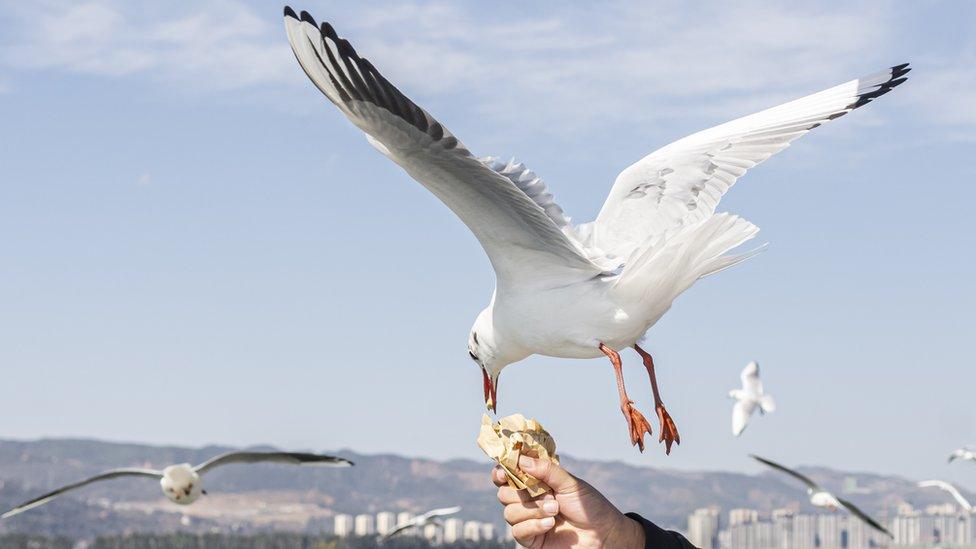
The study's lead author suggests more needs to be done to improve the relationship between humans and seagulls
"Our results indicate that observing humans eating a specific food item will not only make that specific item more attractive, but also increase a gull's preference for other items like it," the study says.
The findings also show more needs to be done to improve the prickly relationship between people and seagulls.
"It is likely that simply deterring the public from directly feeding gulls may not be enough," Franziska Feist, who is a biologist and first author on the study at the University of Sussex, told the Guardian.
"They are still able to observe what we eat and that would inform their ability to target waste, litter and so on."
- Published1 May 2019
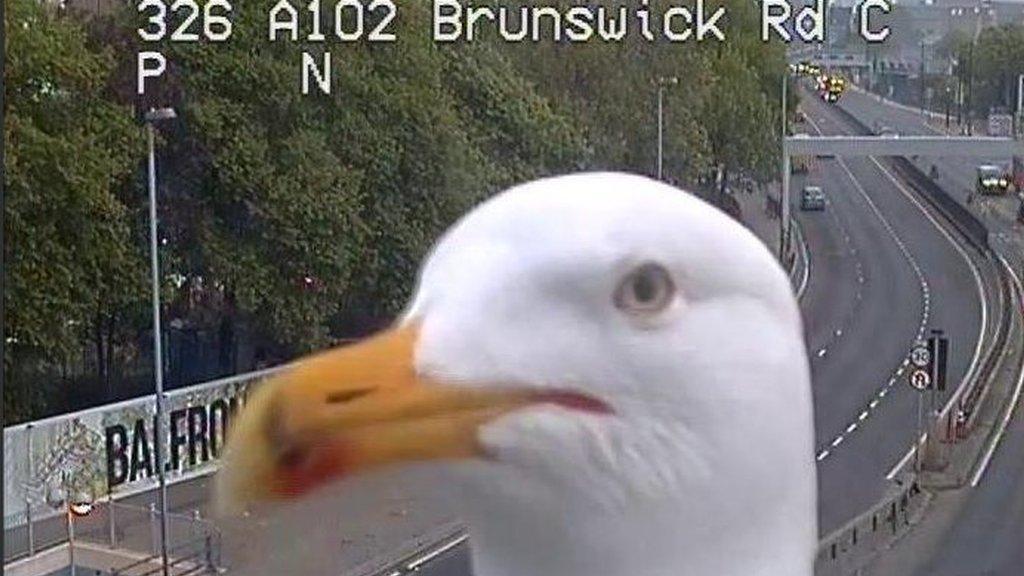
- Published14 November 2020

- Published28 April 2023
